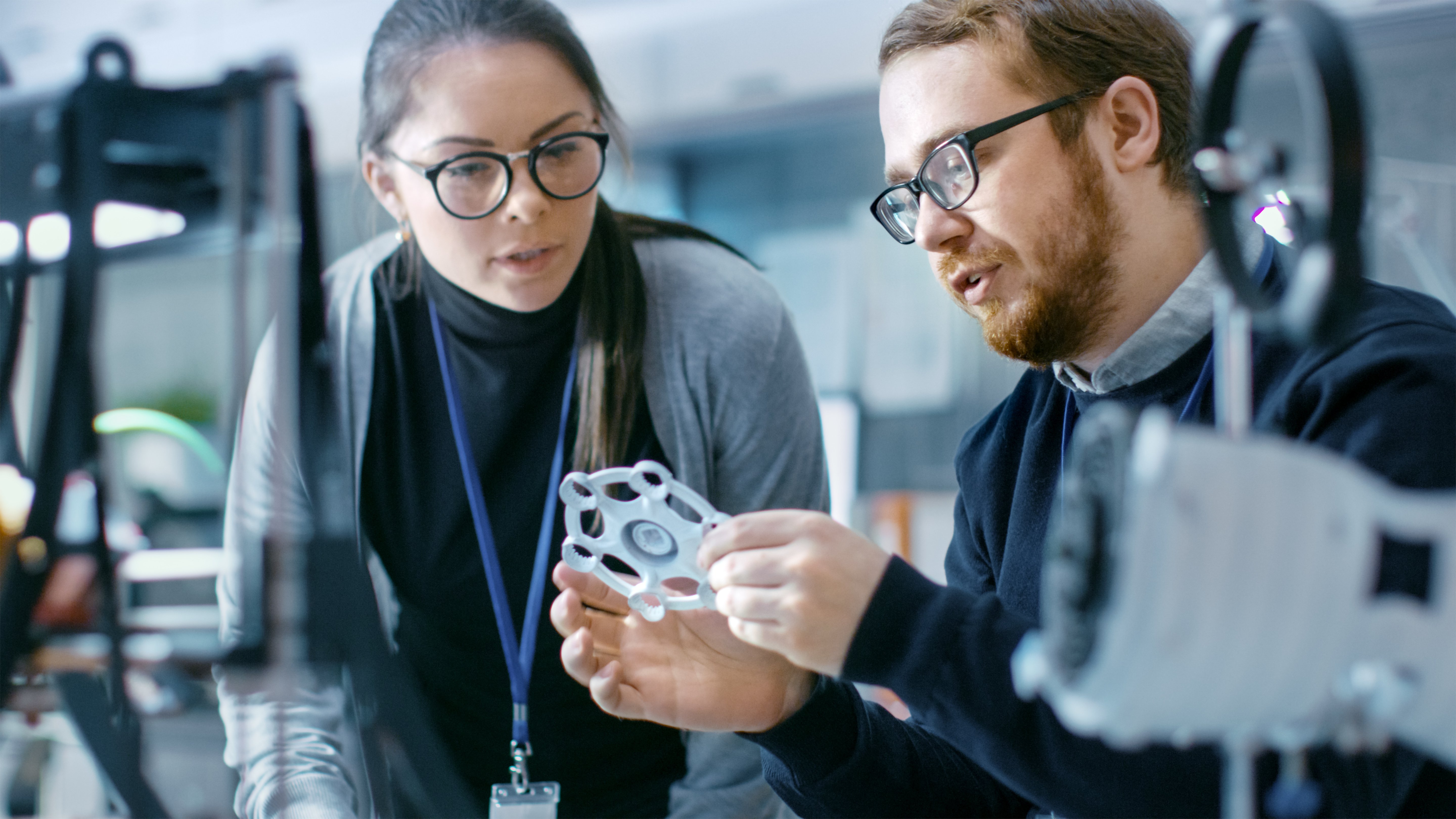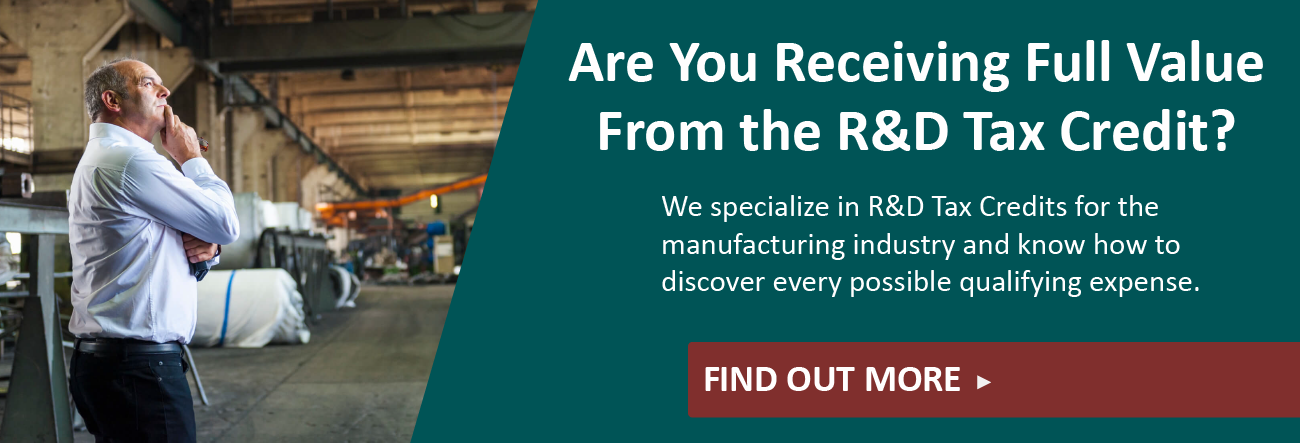
The Make It Right podcast by Janet Eastman recently featured John Madsen, Vice President and Manufacturing Practice Leader at Black Line Group. This article provides an overview of the 30-minute discussion. You can listen to the entire podcast here.
Here’s a quick recap: Many company leaders believe only technology and drug companies enjoy the benefits of R&D Tax Credits, yet 70% of all tax credits are claimed by manufacturers. There are nine common activities performed by manufacturers that qualify for R&D Tax Credits, and a significant amount of money can be saved on taxes and reinvested back into the business.
Read how one manufacturer was able to achieve $6K+ savings per hour invested in their study
“There’s Gold in Them Thar Hills!”
If you’ve ever seen Bugs Bunny duel with Yosemite Sam in the classic Looney Tunes cartoons, you’ll never forget how Sam’s gold prospecting attempts were cooly shut down by Bugs. In prospecting, if you don’t search for the gold, you’ll never find it. That’s how it is for R&D Tax Credits, too.
Episode #123 of the recent Make It Right podcast is called “The Gold in the Manufacturing R&D Tax Credits,” and it covered how many manufacturers are leaving significant amounts of money on the table by not exploring R&D Tax Credits.
The COVID-19 global epidemic caused manufacturers to experience a dramatic slide of 15-45% in about four months only to begin rebounding (yet not fully) around mid-summer. Of course, manufacturers involved in the making of PPE (face shields, masks, etc.) were fortunate enough to enjoy an uptick in business.
The pandemic has sparked some manufacturers to seek out new revenue resources to reinvest back into their business and stay competitive. That could include automation or new equipment or new product development. That’s where the R&D Tax Credit comes in.
First, the Four-Part Test
The tax code regarding research and development (R&D) includes 805 pages of information. A tax credit specialist simplifies that into the Four-Part Test to determine what qualifies and what doesn’t:
1. Permitted Purpose. This is the activity intended to make or improve either a product or process that results in improved function, performance, reliability, quality, or cost efficiency.
So, even if a manufacturer’s customer gave them a blueprint or CAD file to follow, including materials to use, the “secret sauce” is how that part is made, which qualifies as R&D.
2. Technical Uncertainty. Eliminating technical uncertainty when developing/improving a product or process related to methodology, design, techniques, formulas, or inventions is critical.
3. Process of Experimentation. This activity includes a process of experimentation to eliminate or resolve technical uncertainty. During the process, various alternatives and approaches are evaluated by modeling, simulation, trial and error, prototyping, and other methods.
4. Technological in Nature. The process of experimentation must rely on the hard sciences (engineering, physics, biology, chemistry, computer science).
Simply put, if you make or improve a product or a process — for yourself or your customer — you have activities that qualify for the R&D Tax Credit. This even applies to new or revised quotes that don’t end up as a final product. The research (time, effort, etc.) to complete the process, including materials, flow, design, packaging, etc. can all be captured and end up qualifying for the R&D Tax Credit.
Nine R&D Qualifying Activities in Manufacturing
1. Quoting — Gathering information to quote a project; salespeople may be involved in some portion of the “Fit. Form. Function.” side of the equation.
2. Designing — Early team design meetings help engineer the best process, and may include people from numerous areas to ensure the lowest quote.
3. Establishing Processes — Estimated projects go through fine-tuning after they’re awarded; for instance, determining who is responsible for various aspects of the layout and the process.
4. Toolmaking — Tool drawings, layout, and building — accounting for the team members doing each task.
5. Engineering the Process — Incorporating ideas on the shop floor; organization and proofing out the processes needed.
6. Setting up the Job — Both people setting it up for the first time and those directly supervising them.
7. Programming — Every part of getting the project up and running, even behind-the-scenes activities.
8. Assuring Quality — Checking quality using various methods — PPAP, FMEA, etc. — to ensure only good and stable products are accepted.
9. Packaging — Some items require containers that are uniquely shaped or returnable or able to protect delicate parts.
Day-to-Day Getting in the Way
The daily demands on manufacturers are stressful, and they’re intensifying (especially this year). Production is always the #1 goal, so R&D Tax Credits are not top of mind, which allows them to slip by. The bottom line, however: it’s like throwing money out the window.
Yet, once qualifying activities are explained by a tax credit specialist, and everyone is on board, activity awareness can become second-nature. The tax law, and it’s four-part test, are known and referenced by key workers in the manufacturing plant. Plus, time tracking systems can automatically capture relevant data, and personal interviews do the rest of the research (even if that has to be done remotely because of COVID-19).
Speaking of demands that involve the coronavirus pandemic, March 2020’s CARES Act, in addition to PPP payroll assistance, also provides the ability to carry back net operating losses up to five years, making this year less painful for manufacturers that may incur a loss.
Claim Your Gold
Identifying and calculating your qualified research expenses (QREs) during an official R&D Tax Credit Study helps ensure that everything is properly documented so it can be defended, if necessary.
QREs for tax credits are broken down into three categories:
- Wages that are paid as part of R&D expenses (and included in tax credit calculations) are only those that paid for “qualified services” performed by those employees.
- Supplies could be anything used in R&D expenses (parts, molds, base materials, etc.), taking on the risk of building a new tool or making or improving a part.
- Contractor research expenses may include whatever expertise is needed that may not normally be found within the four walls of your building. Of course, only services performed to meet the specific R&D criteria are eligible (at 65%).
Roughly speaking, about 8-12% of all three categories totalled together would be a company’s R&D Tax Credit (federal taxes). Obviously each manufacturer is different, so having industry knowledge helps a tax specialist speak directly, observe how processes work, and discover the hidden, “golden” opportunities.
Strongly consider looking into the R&D Tax Credit if you are:
- A contract manufacturer; if custom products are being manufactured, opportunities exist
- Considering automation and/or upgrading equipment
- Using and/or developing software (especially writing code or programming a machine)
No one can predict the future. Yet, by claiming the R&D Tax Credit, many manufacturers are better able to reinvest in their business so they can become more competitive, grow faster,and make more money.
At Black Line Group, we’ve helped some manufacturers claim tax credits over $1,000,000/year. That translates to thousands of tax dollars saved for every hour a team invests in their R&D study. For a complimentary consultation, reach out to our team of experts.
Wondering if you’re receiving full value from the R&D Tax Credit? Review our guide: Manufacturing R&D Tax Credit Guidance.





